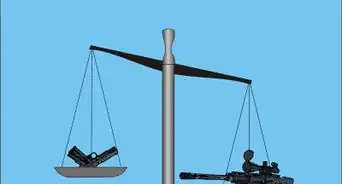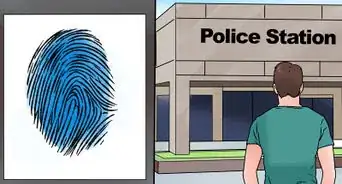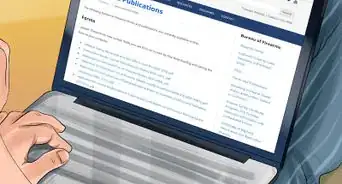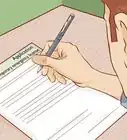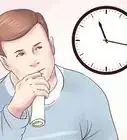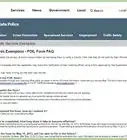wikiHow is a “wiki,” similar to Wikipedia, which means that many of our articles are co-written by multiple authors. To create this article, 54 people, some anonymous, worked to edit and improve it over time.
There are 10 references cited in this article, which can be found at the bottom of the page.
wikiHow marks an article as reader-approved once it receives enough positive feedback. This article received 19 testimonials and 93% of readers who voted found it helpful, earning it our reader-approved status.
This article has been viewed 2,481,570 times.
Learn more...
According to the second amendment of the United States Constitution, it is your right as a citizen to keep and bear arms. However, there are rules and qualifications that you'll need to follow and meet before doing so. If you're qualified and you follow all the rules, you can responsibly purchase a firearm in the state of California.
Steps
Check Your Eligibility
-
1Bring proof of your age. To buy a rifle or a shotgun (excluding assault rifles banned under state law) you must be 21. To buy a handgun you must be 21. Bring a valid, non-expired driver's license or identification card issued by the California Department of Motor Vehicles (DMV).[1]
- You can show military identification instead if you also have permanent duty station orders that prove you're posted in California.
-
2Check your court record. Federal law 18 U.S.C. § 922(g)(1) and various California laws disqualify you from gun ownership if you have been convicted of the following crimes (and sometimes if you are currently charged with one):[2] [3]
- Any crime punishable by more than one year in prison.
- Any violent offense (bans from misdemeanors may be temporary)
- Misdemeanors related to assault, intimidation, stalking, domestic violence, or firearms can lead to a temporary or permanent ban.
- Some court orders or probation conditions include a firearm ban.
-
3Rule out other reasons for ineligibility. These situations prevent you from buying a firearm:
- Currently under a restraining order or protective order
- Currently a ward of the juvenile court due to certain offenses
- Mentally incompetent or mentally ill, according to a court
- Addicted to narcotics, or under conservatorship due to alcoholism
- Dishonorably discharged from the military
- Reported by a psychotherapist for threats against another person
-
4Know the requirements for non-citizens and non-residents. If you are a Lawful Permanent Resident, you may purchase a gun if you bring a green card. If you have a non-immigrant visa, you need to meet stringent requirements:[4]
- Must have been in the U.S. for at least 90 days.
- Must have a hunting license issued in the U.S., or be an official of a foreign government.
- Must bring a copy of the visa and I-94 card (or Alien Registration form).
- Must not have given up U.S. citizenship.
- Note: Many gun dealers are not familiar with these laws. You may need to try a few before you find one who knows this process.
-
5Bring proof of residency if buying a handgun. If you pass the above tests, you can buy a rifle or shotgun. If you plan to buy a handgun, you also need to bring proof of California residency. This could be a utility bill, residential lease, property deed, or government-issued identification (in addition to the DMV card).[5]
-
6Request a Personal Firearms Eligibility Check if you're not sure. If you have a corner case and are not sure whether you're eligible, fill out this PFEC request form. You should get a response within 60 days telling you whether you're eligible to buy a firearm.
- This costs $20, plus the cost of notarizing the document.[6]
- A PFEC is never required. The only reason to have it done is to avoid the hassle of purchasing a gun, then having it denied after the waiting period.
Getting the Firearm Safety Certificate
-
1Check whether you need this certificate. California now requires this certificate for most firearm purchases, even for shotguns and rifles. There are a few exemptions that let you skip this section:[7]
- You have a hunting license and are purchasing a long gun.
- You are in the military or CA/federal police force, or honorably retired from it.
- You have a Special Weapons Permit or Carry Concealed Weapon (CCW) Permit.
- If you have the old Handgun Safety Certificate, you can use it instead until it expires.
- If you have a Curio & Relic Collector license, you can use it to purchase antique guns.[8]
-
2Study for the test. The California Attorney General website provides a study guide and instructional video. Study these to prepare for the test.
-
3Go to a gun shop or firearm training center. Most of these offer the test for an FSC, and can issue one shortly after you pass. This does not have to be the same place you plan to buy a firearm.
-
4Take the test. You will need to pay $25 to take the test. This is a written exam with 30 questions. You must get at least 23 questions right to pass the test.[9] Once you do, you will get a certificate valid for five years.
- If you fail the test, you can take it again from the same dealership after 24 hours. The questions will be different this time. If you switch to a different dealership or need to take the test a third time, you will need to pay the $25 fee again.[10]
Purchasing the Firearm
-
1Visit a gun dealer. Even if you are buying a gun from a private individual, you are required to make the transaction through a licensed firearm dealer. The dealer is allowed to charge an extra $10 per firearm, in addition to normal state fees.[11]
-
2Choose a firearm. Most gun shops will allow you to touch and hold the firearms before you purchase them. If you're not familiar with firearms, ask the employees for advice or refer to the following articles:
- Choose a handgun. Good for self-defense and concealed carry, but short-range and poor hunting weapons. They require a lot of practice and dexterity to use effectively.
- Choose a rifle. Used for both hunting and home defense. Bolt action rifles are typically cheaper than semi-automatic rifles.
- Choose a shotgun. Arguably the most versatile weapon. Shotguns can be loaded with slugs or buckshot, depending on the intended purpose.
- Choose a firearm for self defense. Each type of gun has its own advantages in this scenario.
-
3Apply to purchase the gun. The cashier will need valid your California-issued drivers license or ID card. Depending on the dealer, you may pay full price now, or just a deposit.You will be required to sign some papers (ATF Form 4473, DROS), which will need to be filled out with place of residency and other information. It will also require your right thumb print.
-
4Perform the safe handling demonstration. A DOJ Certified Instructor (typically at the gun store) will walk you through safe handling instructions, and sign a statement saying you completed them.
- You are not required to do this until you pick up the firearm. However, the state of California recommends you do this before you finalize the sale, to make sure you know how to use the firearm.[13]
-
5Pay state and dealer fees. Each transaction (for any number of firearms) costs you $25 in DROS (Dealer Record of Sales) and related state fees. If you are buying directly from a firearm dealer, ask them if they have any extra fees now before you place the order.[14]
- If you are buying from another private party, the gun dealer overseeing the purchase is only allowed to charge $10 per firearm, plus the state fees.
-
6Wait ten days. In almost all cases, you are required to wait ten days before picking up the firearm (exactly 240 hours after submitting the DROS). During this time your DROS information is being sent to the CA DMV, CA DOJ, and then on to the FBI NICS. Each of these organizations has an opportunity to deny your application, or to delay it if they need more time to investigate.
-
7Purchase a safe while you wait. Now is a good time to purchase a California-approved firearms safe (or locking device). Safes are a good way to be able to store your firearms, and store them safely, where they won't get stolen or others (children, friends, etc.) won't have access. As required by law in California, you must either own a California-approved gun safe or purchase a new gun lock for each firearm purchased. Proof is required for each.
- Proof of ownership of a gun safe requires either an owners manual or a receipt of purchase.
- Proof of Lock ownership requires a receipt of lock within 30 days of actual pick up date (not date of sale). Most American gun dealers will already include a free original equipment manufacturer (OEM) gun lock that will satisfy this requirement (not all of the free locks are California legal, see your local dealer for more information or visit the California's Department of Justice website for a complete list of approved locks).
-
8Go pick up your firearm. If you successfully pass the background check, you can now return to the retail outlet and purchase your gun. You will sign some papers, saying you are now in possession of the firearm. You will be required to have (or purchase) a California-approved locking device or prove you own a safe (or sign an affidavit saying you own a safe, but do not have proof).
- If you have purchased a pistol, you will need your handgun safety certificate and proof of residency (this can be a recent water or electric bill or even valid vehicle registration).
-
9Appeal a denied application if necessary. If your DROS application was denied, you will receive a letter within two weeks explaining why. The letter will include instructions for how to appeal the decision, giving you a second chance to make the purchase.[17]
Community Q&A
-
QuestionWhat if I have no bills in my name or a vehicle registration?
 Community AnswerTake your tax return forms with a permanent address (not a P.O. Box).
Community AnswerTake your tax return forms with a permanent address (not a P.O. Box). -
QuestionDo I need to have a gun safe to purchase a rifle in California? Or is having a lock for the rifle enough?
 Community AnswerAs long as you have a California approved gun lock, you're good to go. A gun safe is certainly more secure, however.
Community AnswerAs long as you have a California approved gun lock, you're good to go. A gun safe is certainly more secure, however. -
QuestionIs it mandatory to take a class before I take the HSC test?
 Community AnswerNo. I just walked into the dealer and took the test. No studying as the answers to the questions were all just common sense. I got 100%.
Community AnswerNo. I just walked into the dealer and took the test. No studying as the answers to the questions were all just common sense. I got 100%.
Warnings
- Any firearm should only be shot in a safe and legal location. Be aware of state and local laws on use and transportation of a firearm and follow them carefully. Laws change drastically between states and can change between counties or even cities.⧼thumbs_response⧽
- Any firearm can cause injury or death. Be sure to always point the muzzle in a safe direction and never point it at something you do not intend to shoot.⧼thumbs_response⧽
- Be sure to know what is down range. Bullets can travel for miles or can bounce and ricochet into unintended directions.⧼thumbs_response⧽
- Safety first. Firearms are very dangerous. Only use a firearm if you are an experienced shooter or have a very experienced shooter directly supervising you.⧼thumbs_response⧽
- Regardless of the background check, it may not be a good idea to own a firearm if you know you are mentally unstable, suicidal, or are taking drugs for any mental illness.⧼thumbs_response⧽
- "Assault weapons" banned in California include semiautomatic rifles and pistols with certain characteristics; shotguns with revolving cylinders; and most AK and AR-15 series weapons.[18] This is not a comprehensive list. Certain organizations may apply for a special license through the Dangerous Weapons License application.⧼thumbs_response⧽
Things You'll Need
- Ability to cover the cost of the firearm and all required licenses/applications, as well as any ammunition you might need.
- California ID (like a driver's license).
- Proof of residency in the state you intend to purchase a firearm.
- Handgun Safety Certificate (for handguns).
References
- ↑ https://oag.ca.gov/firearms/pubfaqs
- ↑ http://oag.ca.gov/sites/all/files/agweb/pdfs/firearms/forms/prohibcatmisd.pdf?
- ↑ http://codes.lp.findlaw.com/uscode/18/I/44/922
- ↑ http://codes.lp.findlaw.com/uscode/18/I/44/922
- ↑ https://oag.ca.gov/firearms/pubfaqs
- ↑ http://oag.ca.gov/firearms/pfecfaqs
- ↑ https://oag.ca.gov/firearms/fscfaqs#c6
- ↑ https://oag.ca.gov/firearms/pubfaqs
- ↑ https://oag.ca.gov/firearms/fscfaqs
- ↑ http://oag.ca.gov/sites/all/files/agweb/pdfs/firearms/forms/hscman.pdf
- ↑ https://oag.ca.gov/firearms/pubfaqs
- ↑ http://smartgunlaws.org/multiple-purchases-sales-of-firearms-policy-summary/
- ↑ https://oag.ca.gov/firearms/fscfaqs
- ↑ https://oag.ca.gov/firearms/pubfaqs
- ↑ https://oag.ca.gov/firearms
- ↑ https://oag.ca.gov/firearms/pubfaqs
- ↑ https://oag.ca.gov/firearms
- ↑ https://oag.ca.gov/firearms/regagunfaqs
About This Article
Before buying firearms in California, fill out and submit a Personal Firearms Eligibility Check request form to see if you're eligible. If you are, take the test to receive your Firearm Safety Certificate. Once you pass the test, visit a gun dealer, choose the firearm you'd like to purchase, and fill out an application. Wait up to 10 days for your application to get approved and then pick up your new firearm. For tips on preparing for your Firearm Safety Certificate test, scroll down!

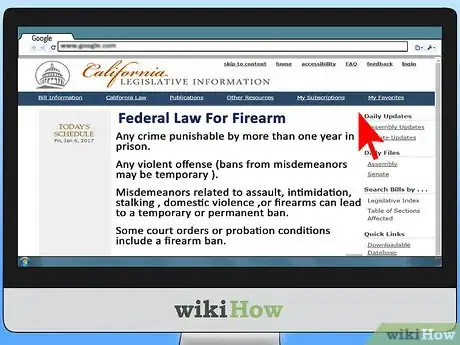
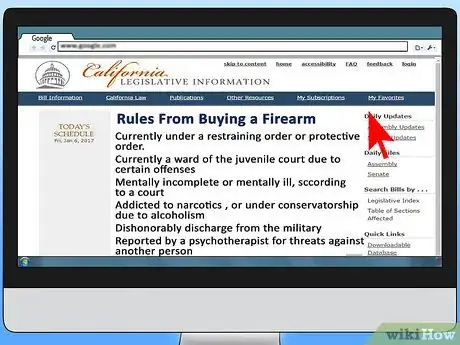
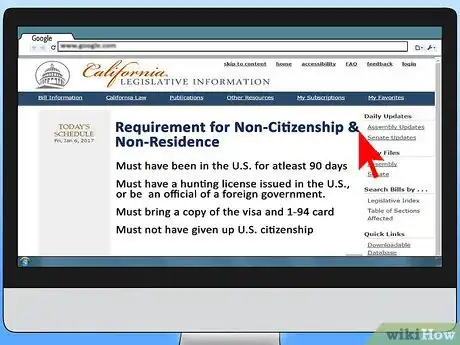

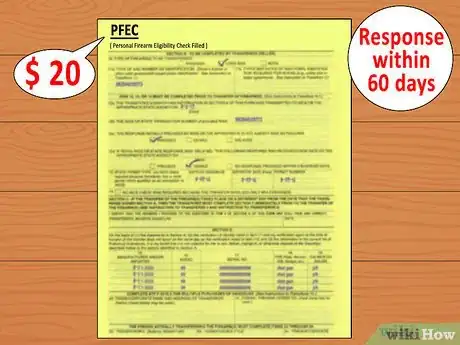
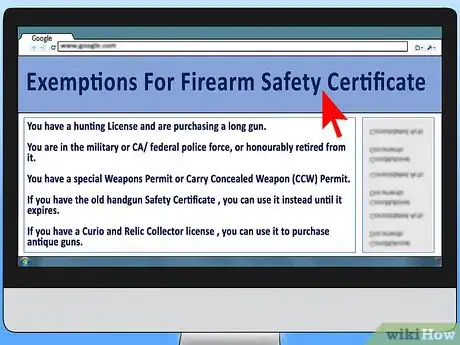
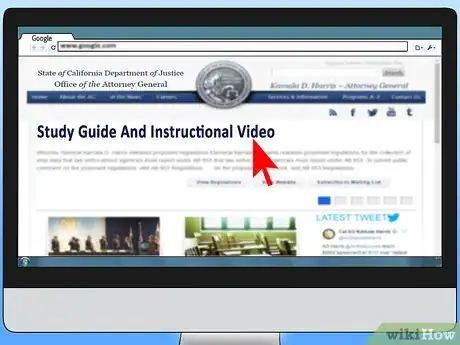
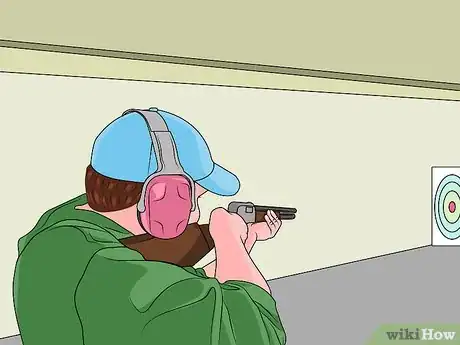
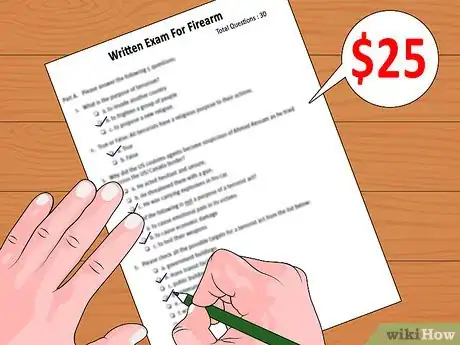
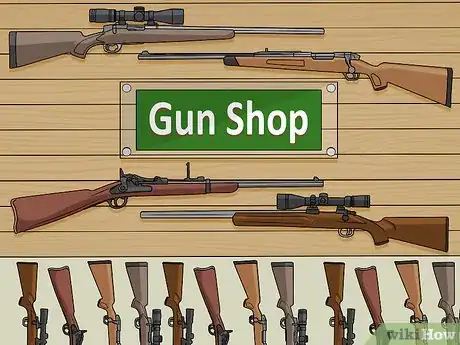
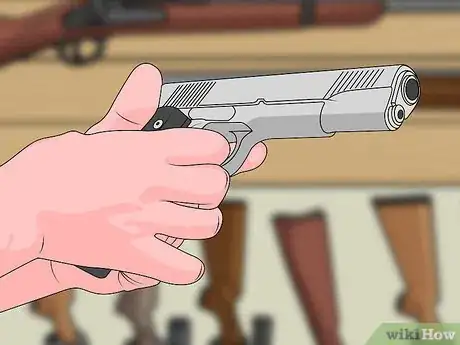
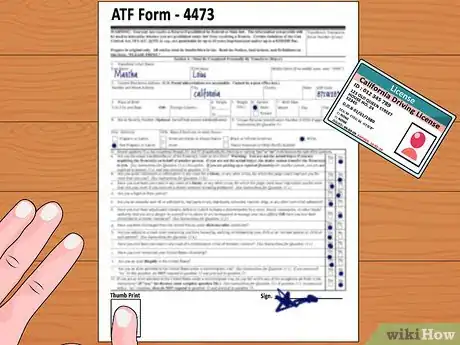
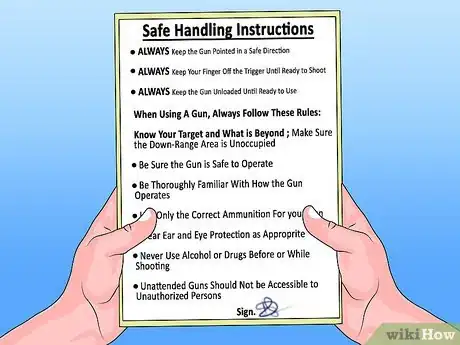
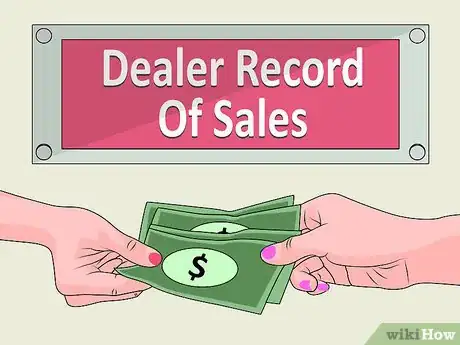

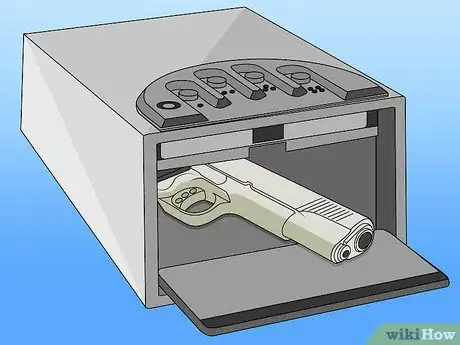
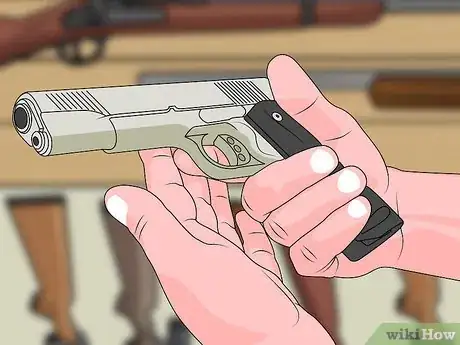
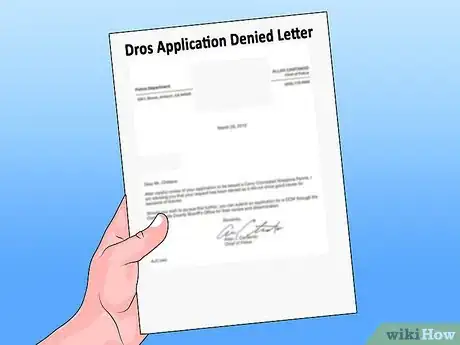

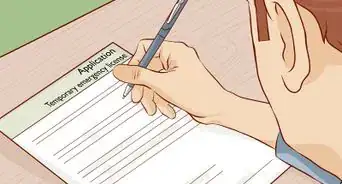
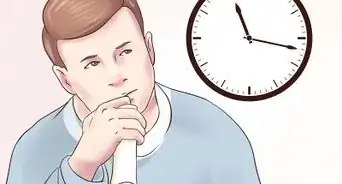
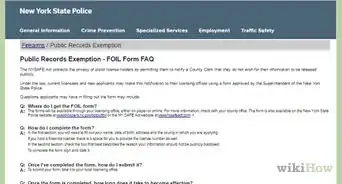

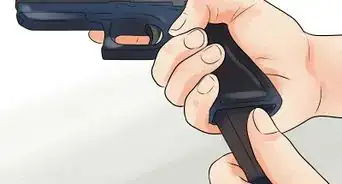
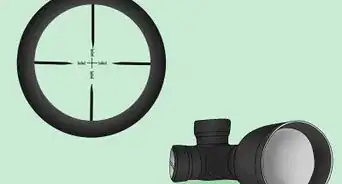
-With-a-Pistol-Step-18.webp)
